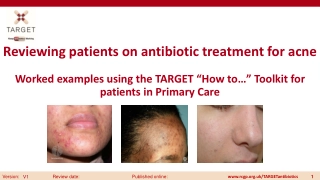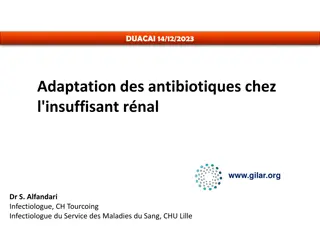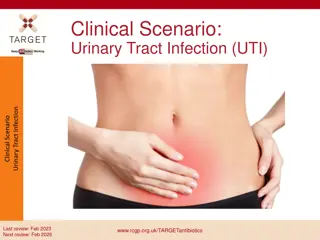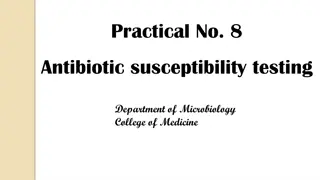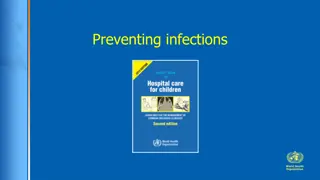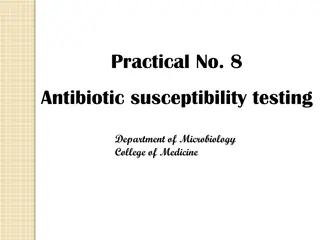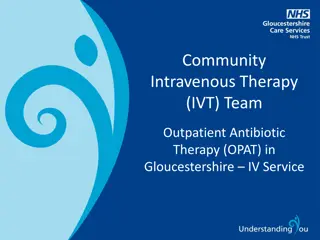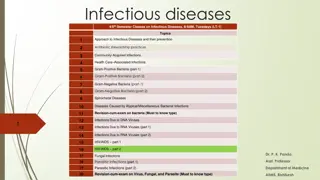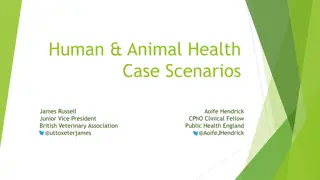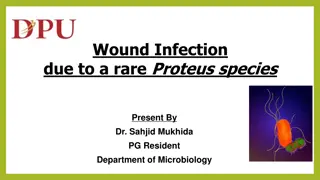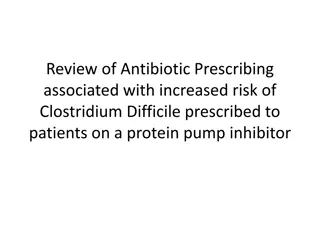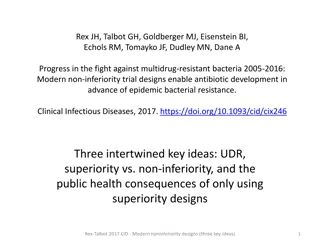Procalcitonin in Antibiotic Stewardship and Critical Care
Procalcitonin, a prohormone of calcitonin, is released in response to bacterial infection and remains low in normal individuals. Its levels aid in decision-making for antibiotic therapy in various clinical scenarios, including COPD exacerbations, pneumonia management, and septic shock. Learn about utilizing Procalcitonin algorithms for effective antibiotic stewardship and care in critical settings.
Download Presentation

Please find below an Image/Link to download the presentation.
The content on the website is provided AS IS for your information and personal use only. It may not be sold, licensed, or shared on other websites without obtaining consent from the author.If you encounter any issues during the download, it is possible that the publisher has removed the file from their server.
You are allowed to download the files provided on this website for personal or commercial use, subject to the condition that they are used lawfully. All files are the property of their respective owners.
The content on the website is provided AS IS for your information and personal use only. It may not be sold, licensed, or shared on other websites without obtaining consent from the author.
E N D
Presentation Transcript
Procalcitonin Dr H
Objectives Procalcitonin Overview Studies in Antibiotic Stewardship Utilizing Procalcitonin Algorithms for Use Pneumonia Critical Care
Clinical Question 1 A 66 y/o Veteran presents to the Emergency Department with nonproductive cough in October. He is a 1ppd smoker with a known history of COPD. His FEV1 is 60%. He is maintained on Symbicort and Spiriva. He has not had a COPD exacerbation in a year. His other PMH is significant for HTN, HL, and a history of Prostate Cancer, in remission. His has a fever to 101.0. HR 96. BP 115/74. His oxygen saturation is 95% on RA with a RR of 20. Lung sounds are distant but clear. CXR identifies bilateral hazy bilateral infiltrates. Procalcitonin is 0.05. What would be your plan of care? A. Supportive care, discharge B. Broad-spectrum abx, steroids, nebulizers, admission to the Wards C. CAP abx, steroids, discharge D. Monitor the patient in the ER for 12 hours and then make a disposition
Clinical Question 2 You are a hospitalist who admitted a patient with pneumonia three days ago. The patient presented with productive cough and mild dyspnea, fever to 102, leukocytosis to 14, and lactate of 2.7. A RLL dense infiltrate was identified on Xray. The patient responded very well to Ceftriaxone and Azithromycin and has defervesced. Today you obtained a procalcitonin of 0.20. The patient s admission procalcitonin was 1.1. What would you do with the antibiotic course for this patient? A. Finish 14 days of antibiotics B. Finish 7 days of antibiotics C. Finish 5 days of antibiotics D. Stop antibiotics
Clinical Question 3 You are the Intensivist on in the ICU. You have a patient that presented in shock, presumed to be Septic. They had a fever, a leukocytosis to 18, and a lactate of 6 on admission. PCT was 10. The patient has been on broad-spectrum antibiotics for 5 days. No culture data has returned positive. The patient is doing much better. He is alert and oriented. Vital signs are normal. His PCT is now 2. What would you do with his antibiotics? A. Finish a 14 day course of antibiotics for a patient who presented with an unknown infection with septic shock B. Finish a 10 day course of antibiotics C. Finish a 7 day course of antibiotics D. Stop antibiotics
Procalcitonin Prohormone of calcitonin Released from multiple sources in response to bacterial infection Low circulating level at baseline in normal individuals Release not stimulated by viral infection, chronic inflammatory diseases or autoimmune diseases
ProcalcitoninLevels in the Spectrum of Infectious Illness
Procalcitoninin Viral vsBacterial Infection
Procalcitonin Guidance in LRTI: Systematic Review 11 trials, 4090 patients Procalcitonin-guided patients had: Lower odds of antibiotic initiation (odds ratio: 0.26; 95% confidence interval [CI]: 0.13-0.52) Shorter mean antibiotic use (weighted mean difference: -2.15 days; 95% CI: -3.30 to -0.99) Procalcitonin use had no adverse impact on mortality (relative risk: 0.94; 95% CI: 0.69-1.28) Hey et al. Clin Chem Lab Med 2018 Jul 26;56(8) 1200-1209
PRORATA Trial Use of procalcitonin to reduce patients' exposure to antibiotics in intensive care units RCT in 7 ICUs (5 university-affiliated hospitals) 307 abx on PCT algorithm 314 abx on standard guidelines Bouadma et al. Lancet 2010 Feb 6; 375(9713):463-74
SAPS Trial Stop antibiotics on guidance of procalcitonin study RCT (3 university-affiliated hospitals, 12 teaching hospitals) Clinicians advised to stop abx if PCT <0.5 ng/mL or decreased by >80% Primary Endpoint PCT Group Control Group p-value 28 Day Mortality 20% 35% 0.0122 365 Day Mortality 36% 43% 0.0188 Assink-de Jong et al. BMC Infectious Diseases 2013, 13:178
ALGORITHMS Sager et al. Procalcitonin-guided diagnosis and antibiotic stewardship revisted. BMC Medicine. 2017
ALGORITHMS Sager et al. Procalcitonin-guided diagnosis and antibiotic stewardship revisted. BMC Medicine. 2017
Clinical Question 1 A 66 y/o Veteran presents to the Emergency Department with nonproductive cough in October. He is a 1ppd smoker with a known history of COPD. His FEV1 is 60%. He is maintained on Symbicort and Spiriva. He has not had a COPD exacerbation in a year. His other PMH is significant for HTN, HL, and a history of Prostate Cancer, in remission. His has a fever to 101.0. HR 96. BP 115/74. His oxygen saturation is 95% on RA with a RR of 20. Lung sounds are distant but clear. CXR identifies bilateral hazy bilateral infiltrates. Procalcitonin is 0.05. What would be your plan of care? A. Supportive care, discharge B. Broad-spectrum abx, steroids, nebulizers, admission to the Wards C. CAP abx, steroids, discharge D. Monitor the patient in the ER for 12 hours and then make a disposition
Clinical Question 2 You are a hospitalist who admitted a patient with pneumonia three days ago. The patient presented with productive cough and mild dyspnea, fever to 102, leukocytosis to 14, and lactate of 2.7. A RLL dense infiltrate was identified on Xray. The patient responded very well to Ceftriaxone and Azithromycin and has defervesced. Today you obtained a procalcitonin of 0.20. The patient s admission procalcitonin was 1.1. What would you do with the antibiotic course for this patient? A. Finish 14 days of antibiotics B. Finish 7 days of antibiotics C. Finish 5 days of antibiotics D. Stop antibiotics
Clinical Question 3 You are the Intensivist on in the ICU. You have a patient that presented in shock, presumed to be Septic. They had a fever, a leukocytosis to 18, and a lactate of 6 on admission. PCT was 10. The patient has been on broad-spectrum antibiotics for 5 days. No culture data has returned positive. The patient is doing much better. He is alert and oriented. Vital signs are normal. His PCT is now 2. What would you do with his antibiotics? A. Finish a 14 day course of antibiotics for a patient who presented with an unknown infection with septic shock B. Finish a 10 day course of antibiotics C. Finish a 7 day course of antibiotics D. Stop antibiotics


